Our tech support department recently got a question from a customer who was very worried about the DATBOSS LR MIX antenna they’d bought from us. They asked us,
If you take a look at this photo, you can see what they mean:
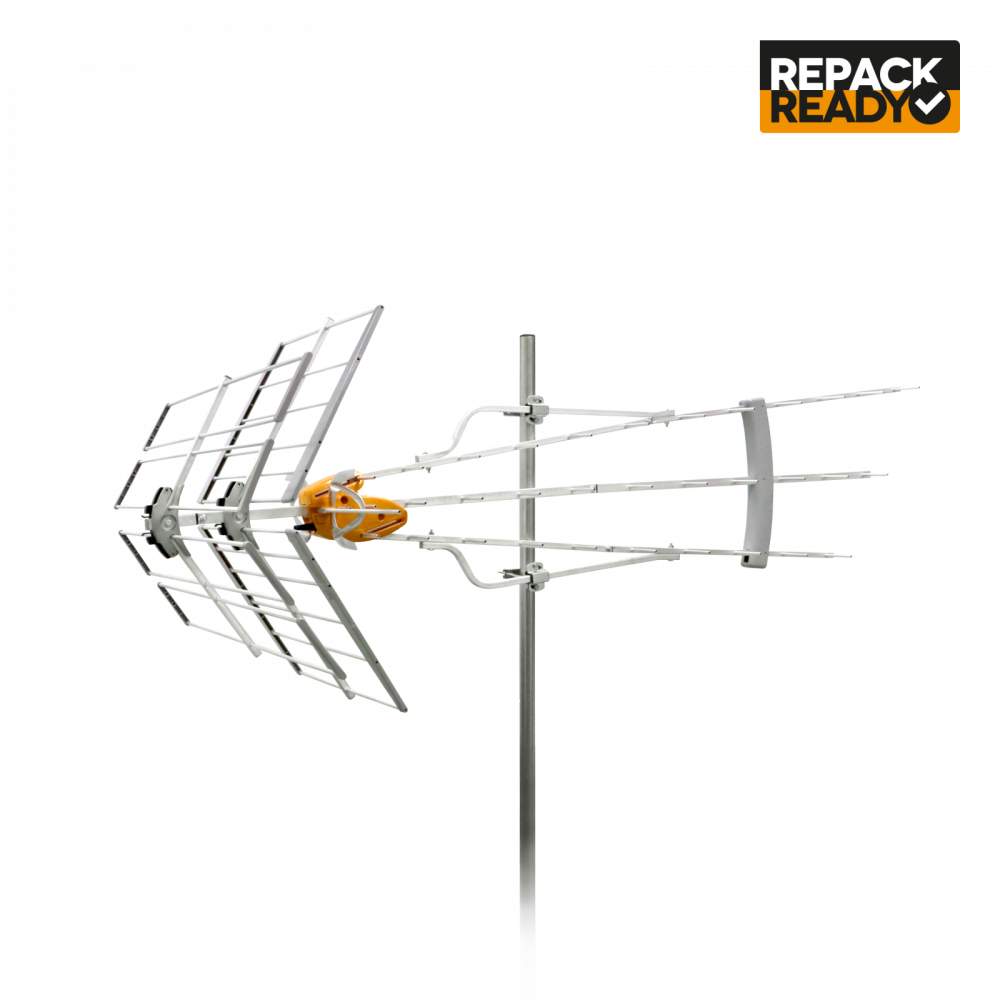
If you look closely, you’ll see that the top and bottom braces of this antenna connect straight to the mast. This is fairly unique to the Televes LR series of antennas, and it’s needed because the antenna is simply so big and relatively heavy. But is that a problem?
Believe it or not, the only part of that giant antenna that’s attached to the antenna cable is the bit of metal protruding from the orange plastic. Here’s a photo – I colored the actual receiving element blue to make it stand out from the rest.
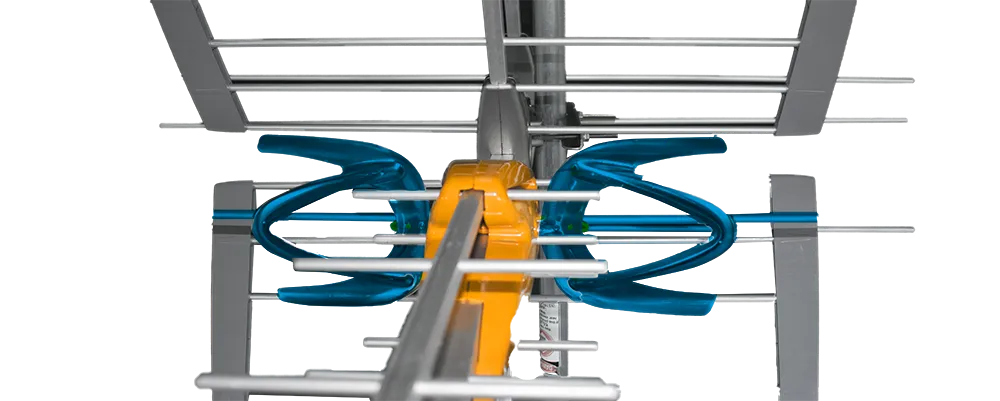
That, friends, is the actual “antenna” part. We call it the “receiving element.” Everything else on that big antenna exists to focus signal on that point, where it’s received and sent down the cable.
The rest of the antenna is made up of three things: directors, reflectors, and braces. The braces are just there to keep the antenna from falling apart. The directors sit in front and focus the incoming signal on the receiving element. I’ve colored them blue to stand out.
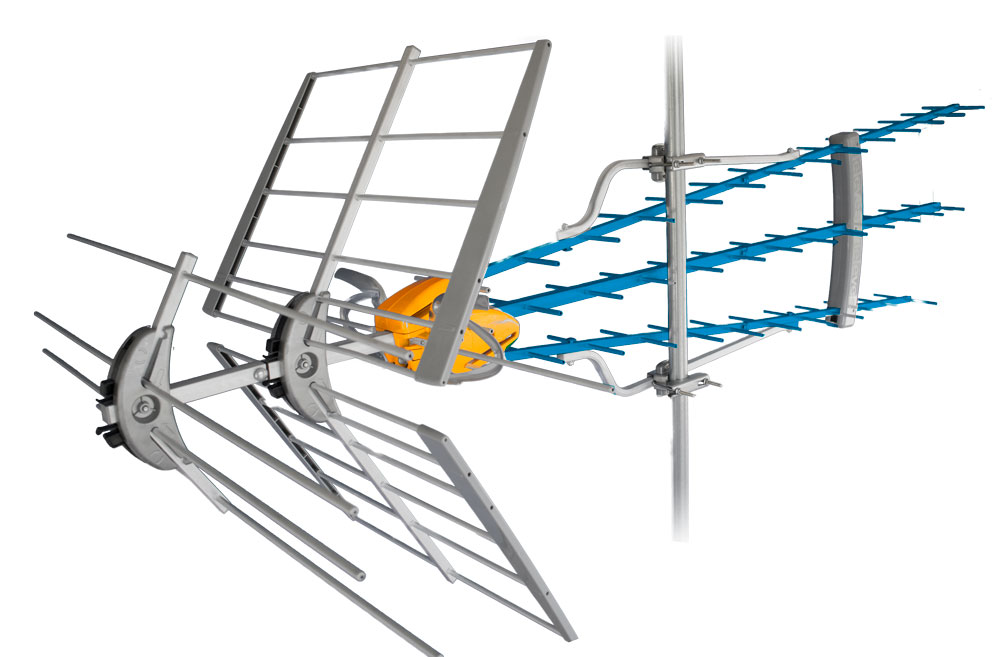
Reflectors sit behind the receiving element and bounce signal to the back side of the receiving element. This has the effect of almost doubling the amount of signal that’s actually received. I’ve colored reflectors blue in the photo below.
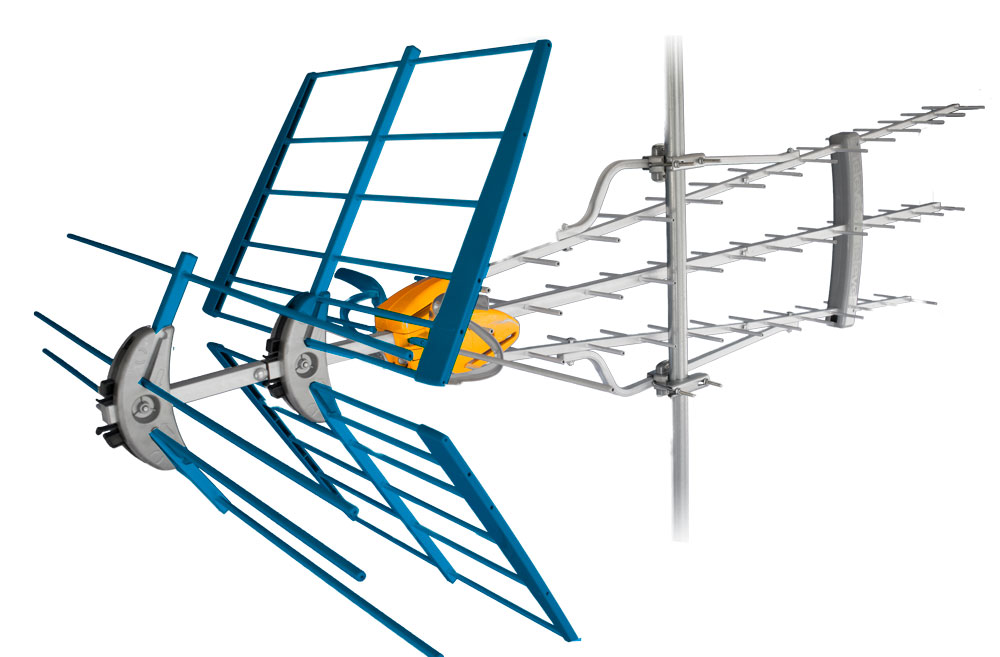
Everything that isn’t a reflector or a director or a receiving element is a brace and it’s only there to keep things from falling apart, which is a good thing.
The Televes DATBOSS Mix LR is a “yagi” antenna. This kind of antenna specifically has a small receiving element and a bunch of other metal bits to try to aim that signal at the receiving element.
We refer an antenna that uses every bit of metal on it to aid in reception as a “log-periodic” antenna or “log-periodic dipole array.” In an LPDA, there are many receiving elements. Each one is a specific size. That way, it gets the best possible reception. LPDA antennas are generally very large when used for TV reception.
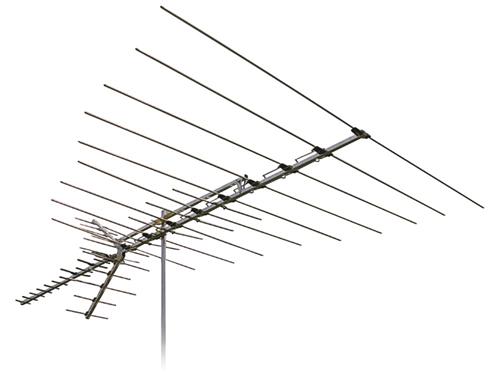
Most large TV antennas are technically “hybrid yagi/log-periodic antennas.” There’s a part designed for UHF reception. That part uses the yagi design because UHF frequencies really work well for the yagi design. The larger part is a log-periodic dipole array. That array uses different elements for every channel. Together you get the best possible reception. If you want to know more about this, here’s an article you can check out.
Because most large antennas are of the hybrid type, people assume that the Televes antenna is too. However, the Televes antenna,a very well-engineered Yagi antenna, gives customers great results without the need for an LPDA.
If you are ready to buy an over-the-air antenna, shop at Solid Signal! If you need help choosing one, call us. The number is 888-233-7563. We’re here during East Coast business hours. If it’s after hours, no problem! Fill out the form below. We’ll get right back to you.
The post Televes’ DATBOSS antennas have some parts that short out to the mast. Is this a problem? appeared first on The Solid Signal Blog.
Continue reading...
When I assemble the antenna according to your guide, the top and bottom parts attach directly to the mast. This creates a dead short which means that part of the antenna won’t work. What am I missing?
If you take a look at this photo, you can see what they mean:

If you look closely, you’ll see that the top and bottom braces of this antenna connect straight to the mast. This is fairly unique to the Televes LR series of antennas, and it’s needed because the antenna is simply so big and relatively heavy. But is that a problem?
Quick answer: no. Here’s why
Believe it or not, the only part of that giant antenna that’s attached to the antenna cable is the bit of metal protruding from the orange plastic. Here’s a photo – I colored the actual receiving element blue to make it stand out from the rest.

That, friends, is the actual “antenna” part. We call it the “receiving element.” Everything else on that big antenna exists to focus signal on that point, where it’s received and sent down the cable.
Directors and reflectors
The rest of the antenna is made up of three things: directors, reflectors, and braces. The braces are just there to keep the antenna from falling apart. The directors sit in front and focus the incoming signal on the receiving element. I’ve colored them blue to stand out.

Reflectors sit behind the receiving element and bounce signal to the back side of the receiving element. This has the effect of almost doubling the amount of signal that’s actually received. I’ve colored reflectors blue in the photo below.

Everything that isn’t a reflector or a director or a receiving element is a brace and it’s only there to keep things from falling apart, which is a good thing.
Why do people think that other parts of the antenna aid in for reception?
The Televes DATBOSS Mix LR is a “yagi” antenna. This kind of antenna specifically has a small receiving element and a bunch of other metal bits to try to aim that signal at the receiving element.
We refer an antenna that uses every bit of metal on it to aid in reception as a “log-periodic” antenna or “log-periodic dipole array.” In an LPDA, there are many receiving elements. Each one is a specific size. That way, it gets the best possible reception. LPDA antennas are generally very large when used for TV reception.

Most large TV antennas are technically “hybrid yagi/log-periodic antennas.” There’s a part designed for UHF reception. That part uses the yagi design because UHF frequencies really work well for the yagi design. The larger part is a log-periodic dipole array. That array uses different elements for every channel. Together you get the best possible reception. If you want to know more about this, here’s an article you can check out.
Because most large antennas are of the hybrid type, people assume that the Televes antenna is too. However, the Televes antenna,a very well-engineered Yagi antenna, gives customers great results without the need for an LPDA.
Want to know more?
If you are ready to buy an over-the-air antenna, shop at Solid Signal! If you need help choosing one, call us. The number is 888-233-7563. We’re here during East Coast business hours. If it’s after hours, no problem! Fill out the form below. We’ll get right back to you.
The post Televes’ DATBOSS antennas have some parts that short out to the mast. Is this a problem? appeared first on The Solid Signal Blog.
Continue reading...

